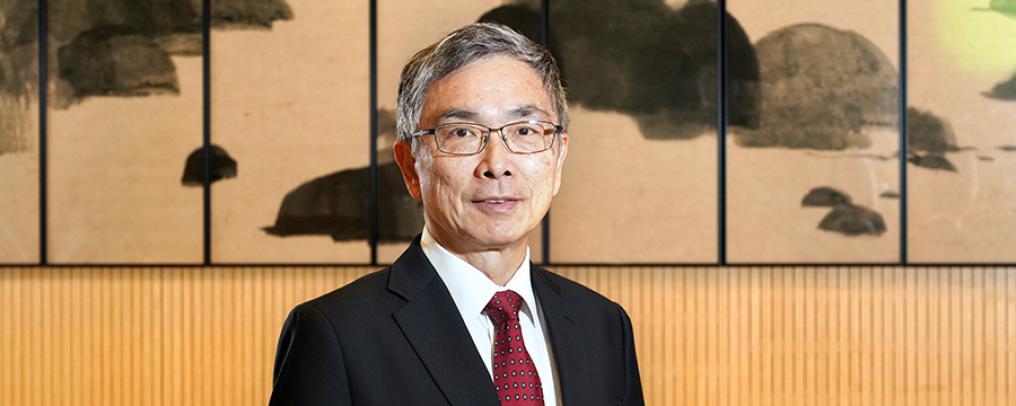CSj gets some best-practice advice from governance professionals in Hong Kong and Mainland China on how to build and maintain an effective social media governance regime.
In August 2018, Tesla’s chairman Elon Musk posted a message on Twitter that he had secured funding to take Tesla private at US$420 per share. This tweet sent Tesla’s stock seesawing for weeks. This later turned out to be a marijuana-inspired joke he had made in order to amuse his girlfriend. The United States’ Securities and Exchange Commission (SEC) was not amused. It promptly filed charges in September against Musk for securities fraud and distributing misleading information.
Musk ended up paying a US$20 million fine, agreeing to step down as Tesla’s chairman for three years and to get pre-approval of his tweets from Tesla’s legal counsel. Separately, Tesla also agreed to pay US$20 million to settle claims that it had failed to set in place measures to safeguard Elon Musk’s communications, and to replace Elon Musk with two independent directors. By the time the dust settled, Tesla’s share price had fallen by more than 30% from early August to late September.
This episode is a dire lesson in the importance of social media governance for businesses, especially for listed companies. The rapid growth of the social media sector – Statista (www.statista.com) estimates that there are now over a billion social media users in Asia – and the opportunities it provides is making it impossible to ignore.
Places in Asia are also driving the growth of internet speeds and connectivity. Hong Kong launched a Smart City blueprint back in 2017, envisioning a highly connected city driven by technology and innovation. Mainland China is also aiming for the high-speed 5G rollout from 2020, with speeds up to 20 times the current 4G speeds.
A recent e-commerce report commissioned by PayPal last year pointed to the growth of a new economy, called ‘social commerce’, driven – especially in Asia – by the combination of smartphones and e-commerce. The region also leads the world in online advertising spending and will contribute to almost half of the world’s increase in ad spending this year, according to estimates by Japanese social media company Dentsu Aegis Network last year.
The benefits of social media can be seen clearly in the hospitality, entertainment and consumer sectors, where the use of social media can directly affect the company’s bottom line, or even an entire industry. For example, the film and entertainment industry is still recovering from the backlash of a Sina Weibo post made by a Chinese TV anchor in May 2018. The post comprised a photo of tax-dodging pay agreements, which, while redacted, implicated popular Chinese actress Fan Bingbing and prompted an industry-wide cleanup.
‘I think in this day and age a company would have to work very hard to ignore the value and impact of social media,’ says Dylan Williams, Company Secretary of Sands China Ltd. The Hong Kong–listed company is the leading developer of integrated resorts in Macau, owning some of the biggest resorts and convention centres such as The Venetian Macao and Cotai Expo.
‘We recognise that it helps to build relationships with customers, connect with guests and partners, and also connect with the public generally, in terms of our public image and how we portray ourselves online. It allows us to have real interactions with people, either with those individuals directly or a large subset or even the entire planet.’
Some commonly used social media platforms by businesses are Facebook, Twitter, Instagram, YouTube and LinkedIn. In China, Tencent’s WeChat, Tencent QQ, Sina Weibo and Baidu Tieba lead the pack when it comes to social media use. It is increasingly common for companies to publish press releases or to release official statements on these platforms.
Risks
For shipping conglomerate COSCO, social media is a way of enhancing the company’s brand and engaging with investors, Guo Huawei, Company Secretary of China COSCO Holdings Company Ltd, says. Internally, it is also used for recruitment purposes. COSCO is one of the largest shipping companies in the world by container volume, and has H shares listed on the Hong Kong and A shares listed on the Shanghai stock exchanges.
‘Most companies have official WeChat and Weibo accounts nowadays. The benefit of social media is that good news can travel fast, but fake news, if not controlled well, also travels fast,’ says Guo, acknowledging the speed with which information travels via social media.
The probability of an incident like that of Tesla and Elon Musk is, however, relatively low for COSCO. ‘All of our employees, from regular employees to higher management, especially board members, have a high awareness of compliance risks,’ says Guo.
Still, there are risks to consider when it comes to social media. Legal liabilities do not only apply to directors, they apply to all employees’ social media activities. The more severe consequences include reputational risks arising from employees’ posts that may harm a business and its reputational interests, and leakage of intellectual property and trade secrets, whether intentional or unintentional.
There are also issues of employee privacy and ethical considerations such as to what extent the employer’s inquiries into the online lives of employees is justified on the basis of business concerns. Another very current challenge is the proliferation and rapid dissemination of fake news.
For a listed company, the fundamental principle of social media governance is to ensure two main goals:
- to enhance and protect the company’s business and reputation, and
- to ensure that the marketplace is fair for their investors.
Regulators in both Hong Kong and Mainland China have made the obligation for listed companies to ensure the accuracy and timeliness of disclosures a focus of their enforcement work. Perhaps less understood by the market, however, is the equally important obligation for listed companies to ensure that some investors are not privileged above others in terms of their access to corporate information. Selective disclosure via social media groups could certainly lead to disciplinary action by regulators, not to mention the loss of trust among wider shareholder and stakeholder groups who feel they have been kept in the dark.
Kenny Luo, Company Secretary of Bank of China (Hong Kong), shared that selective disclosure and information incompleteness are some of the challenges that can result from social media disclosure.
‘While social media plays a constructive role in corporate information disclosure and dissemination, it also causes problems such as selective disclosure as well as circulation of misinformation and disinformation. The negative effects brought by disinformation would be massively amplified on social media so the impacts on medium and small individual investors would be particularly significant. This in turn would be likely to result in turbulence in the stock market. It is challenging to ensure the accuracy and completeness of information disclosure on platforms such as Weibo and WeChat with their word limit for text messages.’
‘In order to stay in line with the relevant regulatory requirements, compliance checks are necessary before information is disclosed on social media, especially on interactive platforms, given their high frequency of information exchange. The human resources required for this can be a thorny problem for corporates,’ Luo adds.
Stock exchanges have strict guidelines on how to communicate with investors. With the increasing popularity of social media as a communications channel for businesses, in 2013 the SEC stated that they accept that most social media is a perfectly suitable method for communicating with investors, provided the information is accurate, although Hong Kong is not on the same page yet.
‘At present, there is still no explicit regulatory guidance on whether social media can be used as official channels for information disclosure for issuers in Hong Kong. It will be encouraging to see local regulations catch up with the latest market development and expedite the development of its standards and governance of investor relations practices using social media. It is instrumental to building a multi-layered management system of online investor relations while leveraging the diverse functionalities of stock exchange websites, interactive platforms, corporate websites, designated financial websites and social media outlets,’ Luo says.
Nevertheless, what a company says through social media still needs to meet the same standards as other communications, and the information must be released to investors at the same time. In this context, companies need to have policies and measures in place to balance social media governance risks with the opportunities it can bring.
Implementing a social media governance policy
A senior executive in a listed company, who wants to be identified only as Li, says in his personal capacity, ‘One way to reduce the risks brought about by social media is to pull together cross-departmental groups from different functions.’ Developing and implementing a company-wide social media governance policy is an inter-departmental effort, bringing together the investor relations, marketing and communications, human resources, legal, compliance and finance functions, among others.
Regulations relevant to social media governance policy include those on employee privacy, labour, cybersecurity and the general provisions of civil law. A good social media governance policy would cover both internal and external communications. Stock exchanges usually have strict rules and offer guidelines on internal and external communication. When developing a social media governance policy, Guo advises starting with those first. ‘We formulate our communications policy on these guidelines and use them as a basis to exceed the standards set by the stock exchanges. We monitor these guidelines very closely.’
How it is done
One should have a complete management guidance and internal control system for information disclosure. Regarding material information disclosure, there should be a well-defined procedure and sensible control with respect to its identification, internal approval and external distribution,’ says Luo.
Secondly, one should embrace new technologies and proactively strengthen the knowledge of relevant applications, and continue to enhance internal management so as to safeguard against the potential risk of information disclosure arising from the use of social media. For example, a robust procedure is needed for managing external communication channels such as corporate websites and corporate Weibo and WeChat accounts, and for authorising senior executives such as directors, supervisors or management members engaged. Management of social media outlets should be centralised. The probability of non-compliance can be minimised by managing the source of risk.
Li also suggests using internal communication software to reduce risks. ‘Communication software such as internal messenger can help to reduce risks when it comes to internal surveillance and controls,’ he says.
Sands China has strict company-wide social media policies that apply to everyone across all levels, including Williams himself. There are general policies that apply to all team members even when they are posting outside of work hours on personal devices, and there are policies that apply specifically to team members authorised and empowered to communicate and participate in social media on behalf of the company. These policies include guidelines regarding rumours, where the company’s approach is not to engage in any speculation.
‘It is vitally important that our team members do not spread or participate in the spreading or discussion of rumours online, particularly rumours about any confidential information relating to the company or its finances, or about business strategies that could potentially be confidential. Participating in those discussions will subject team members to disciplinary action internally but could also subject them to legal liaibility as well’, Williams says. For those staff authorised to communicate on behalf of the company online, the company actively works to ensure that they are familiar with any relevant subject matter before communicating with or responding to the public. ‘Those team members are also told that if subject matters they are not familiar with come up in any discussions, they should avoid engaging further until they have the latest information.’
‘Everyone can be the media,’ remarks Guo. ‘To maintain our high standards of compliance, we also train our board members during our annual meetings, as well as when there are any updates in regulation or any changes.’
‘Each individual in the company has a responsibility to uphold the company’s social media governance policy,’ says Li. ‘This includes not disseminating confidential information or releasing sensitive information to the public, and not using or propagating incorrect and/or unverified information.’
In fact, all interviewees for this article stressed that training is a key area for the successful implementation of social media governance policy.
For Sands China, the regulatory environment in which it operates is strict and complex. ‘There are different and complicated laws and regulations around the world governing the various different aspects of our business, including laws relating to advertising, that we must comply with at all times,’ Williams explains. ‘Team members who work in the communications, marketing or e-commerce departments must be well-trained’, he adds, in order to prevent falling foul of these laws.
‘A policy without training is of limited value to any organisation. There must be a culture of providing regular, relevant and up-to-date training. At Sands China, individuals who are responsible for external communication will receive regular scheduled training and then department heads are responsible for the ongoing and day-to-day monitoring of what is being said,’ Williams says.
Outreach
Once an overarching social media governance policy has been set, communication with external parties usually falls to the team in charge of social media and external relations. For COSCO, Guo says that in order to allow investors to quickly receive the most complete information, they ensure that investors are aware that the most correct information would always be disseminated on the following channels, in order of importance:
- official channels designated by the stock exchanges
- the official company website, and
- an internal official mailing list, which includes email and the company’s official social media channels such as WeChat and Sina Weibo.
The more official channels would be the first two and the third supplements the efforts via social media.
At Sands China, personnel in charge of social media communications to the public fall under another umbrella of policies pertaining to their job scope, on top of company-wide policies on social media for everyone else. The personnel tasked with social media communications generally have to follow the guidelines requiring them to be transparent, respectful, and knowledgeable in respect of the content posted, and need to take responsibility for what is posted.
‘They must be transparent and identify their affiliation with the company and their role, they must speak knowledgeably, so they’ve got to understand the product and the messaging and speak only of what they know’, Williams says. Transparency in communication is an area that is heavily emphasised by Sands China.
Staff handling social media communication with the public are also required to take responsibility and manage what is being posted. ‘If something gets posted accidentally or is inaccurate, they must respond quickly and clearly and in an upfront manner’, Williams explains. ‘In addition, all posts must be respectful. Team members should always be mindful to protect the company, our guests, partners, investors, suppliers, business associates, vendors and other team members by not disclosing any personal information or referring to them in any way in posts.’
As a general rule, the relevant staff who are communicating publicly on behalf of the company have to state in what capacity they are communicating. These individuals who are communicating as authorised users are required to make it very obvious to the public with every post they make that they are representing the company in the communication.
With the right social media governance policy in place to manage risks, businesses can reap the benefits of social media to enhance their business and keep them relevant in this age of technology and instant information. Governance experts can help their companies mitigate the risks of using social media by maintaining high compliance standards and using social media to generate a positive reputation among the public.
Poo Yee Kai and Annabelle Low
Journalists


